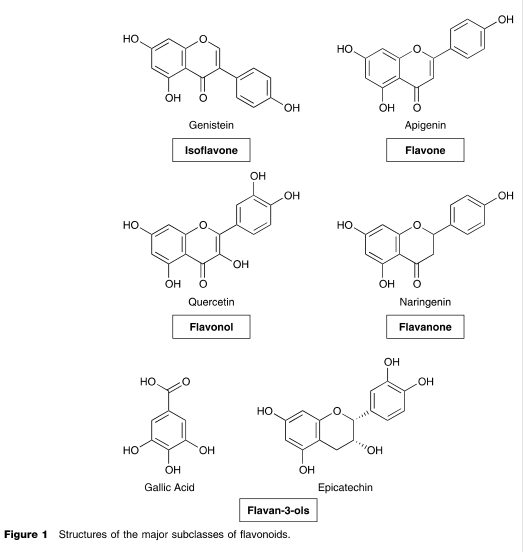The most important dietary sources for flavonoids include fruits vegetables tea soybeans etc. Other possible mechanisms include attenuating the inflammatory process in atherosclerosis reducing thrombosis promoting.
 Drinking Tea Can Lead To A Healthier Heart
Drinking Tea Can Lead To A Healthier Heart
There is mounting evidence that suggests that antioxidant-rich foods play a role in reducing the risk of cardiovascular disease.

Flavonoids in tea. The flavonoids found in tea specifically catechins and tannins have strong antioxidant properties. Flavonoids are polyphenolic compounds that appear in tea cocoa fruits vegetables and wine. Flavonoids are composed of a variety of health-promoting compounds and might have antioxidative antimicrobial and possibly anticarcinogenic and cardioprotective effects 1.
A class of secondary metabolites which provide health. The flavonoids in tea come from two sub-groups. Inhibition kinetics assays and molecular docking simulations showed that myricetin could bind to the active site of COMT and inhibited COMT.
Tea provides approximately 83 of the total intake of flavonoids in the American diet followed by citrus 4 and wine 2 8. Tea flavonoids help maintain normal blood vessel function endothelial function. Flavonoids are substances found in plants including fruits and vegetables such as pears apples berries and onions as well as plant-based drinks like.
Also the flavonoids found in tea coffee and soy may help lower your risk of having a heart attack or stroke. Five flavonoids in vine tea displayed moderate to strong inhibition on hCOMT with IC 50 values ranging from 096 μM to 4247 μM in which myricetin was the critically potent constituent against hCOMT. All teas from the Camellia sinensis plant such as black green oolong and white but not herbal teas naturally contain between 100 to 300 mg of flavonoids per serving.
Per-capita consumption of flavonoids is about. Epidemiologic studies suggest an inverse association of tea consumption with cardiovascular disease. Five flavonoids in vine tea displayed moderate to strong inhibition on hCOMT with IC 50 values ranging from 096 μM to 4247 μM in which myricetin was the critically potent constituent against hCOMT.
These two groups include about 14 different types of flavonoids. Other Benefits of Black and Green tea Research. The antioxidant effects of flavonoids in tea including preventing oxidative damage to LDL are among the potential mechanisms that could underlie the protective effects.
Camellia sinensis leaves real tea leaves are rich in antioxidants. Compounds that inhibit oxidation which is a chemical reaction that produces free radicals which in turn may damage cells. The flavonoids in green tea have received more.
Flavonoids are a group of various plant chemicals or phytonutrients. Flavonoids are found in high concentrations in tea which is particularly rich in certain flavonoid classes such as flavan-3-ols or catechins and flavonols for example quercetin 7. A diet rich in flavonoids is generally associated with helping to.
According to Balentine all teas contain meaningful amounts of tea phytonutrients. You see tea contains antioxidants as well as flavonoids. Flavonoids contribute significantly to taste and color and help maintain certain normal healthy body functions.
One study published in the Journal of. According to research flavonoids benefits include quelling inflammation which might reduce plaque that builds inside arteries.
